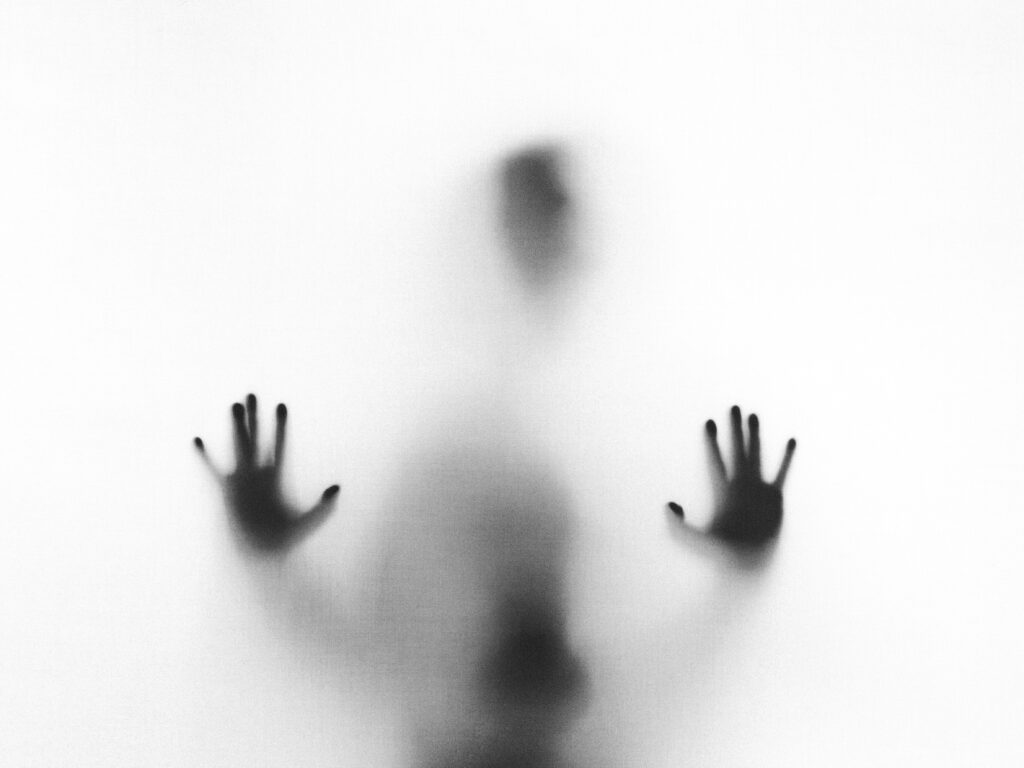Last Updated on December 27, 2023
Panic attacks are not just a mere wave of anxiety but a truly terrifying and overwhelming experience. In those moments, it feels as if the world is closing in, leaving you struggling for control and gasping for a breath of relief. If you’ve ever been through this ordeal, you know firsthand just how paralyzing and utterly debilitating they can be.
In this comprehensive article, we’ll delve deep into the world of panic attacks, exploring their causes, triggers, and symptoms. We’ll also provide 13 strategies for coping with panic attacks, finding relief, and building resilience in the face of these panic-inducing episodes.
Understanding Panic Attacks
Panic attacks are abrupt surges of intense fear or discomfort that can occur suddenly and without warning. Understanding the causes, triggers, and symptoms of panic attacks is essential for effectively managing them.
- Causes of Panic Attacks: Panic attacks can have various causes, including genetic factors, imbalances in brain chemicals, and a history of trauma or stressful life events. They can also be linked to other anxiety disorders, such as generalized anxiety disorder or specific phobias.
- Triggers of Panic Attacks: Common triggers include stressful situations, major life changes, physical illness, or even certain medications. Identifying personal triggers is a crucial step in managing panic attacks.
- Symptoms of Panic Attacks: Panic attacks are characterized by a combination of physical and psychological symptoms. These can include a rapid heartbeat, shortness of breath, trembling, chest pain, and an intense feeling of impending doom. Understanding these symptoms is essential for recognizing a panic attack when it occurs.
Seeking Professional Help
If you’re struggling with coping with panic attacks, reaching out to a mental health expert like a psychologist or psychiatrist is essential. These professionals can provide valuable guidance and support in understanding and coping with panic attacks. They can offer a diagnosis, create a personalized treatment plan, and provide therapeutic interventions and medications if necessary.
Their expertise can be instrumental in equipping you with effective strategies and coping mechanisms to better manage panic attacks, ultimately leading to improved mental well-being and resilience. Remember, you don’t have to navigate this challenging journey alone, and professional help can significantly enhance your ability to cope with panic attacks.
Strategy 1: Deep Breathing Techniques

One of the most effective strategies for dealing with panic attacks is deep breathing. It helps calm your body’s response to stress and anxiety. Here’s a step-by-step guide on how to use deep breathing:
- Find a quiet and comfortable place to sit or lie down.
- Close your eyes and take a deep breath in through your nose for a count of four.
- Hold your breath for a count of four.
- Exhale slowly through your mouth for a count of four.
- Repeat this process several times until you start to feel more relaxed.
Deep breathing can help you regain control over your breathing and slow your heart rate, reducing the intensity of a panic attack.
Strategy 2: Progressive Muscle Relaxation

Progressive muscle relaxation is a technique that involves tensing and then relaxing different muscle groups in your body. It can help alleviate the physical tension that often accompanies panic attacks. Here’s how to do it:
- Find a comfortable place to sit or lie down.
- Start at your toes, tensing them for a few seconds, and then releasing the tension.
- Work your way up through your body, tensing and relaxing each muscle group, including your legs, abdomen, arms, and neck.
- Pay attention to the sensations of tension and relaxation.
Progressive muscle relaxation can help you become more aware of your body and reduce physical symptoms of panic attacks.
Strategy 3: Grounding Exercises

Grounding exercises are useful for bringing your focus back to the present moment and reducing the feeling of disconnection often associated with panic attacks. There are several types of grounding exercises:
- 5-4-3-2-1: Identify five things you can see, four things you can touch, three things you can hear, two things you can smell, and one thing you can taste.
- Deep Breathing and Counting: Inhale deeply, counting to four, and exhale, counting to four. Focus on the numbers as you breathe.
- Mindful Observation: Pay attention to your surroundings, describing them in detail. This can help you stay present and grounded.
Using grounding exercises can help you stay connected to reality and reduce the feeling of impending doom during a panic attack.
Strategy 4: Mindfulness and Meditation

Mindfulness and meditation practices are powerful tools for managing panic attacks by training your mind to be more present and less reactive. Here are some techniques:
- Body Scan Meditation: Focus on each part of your body, releasing tension and promoting relaxation.
- Breath Awareness: Pay attention to your breath, focusing on its rhythm and sensation.
- Guided Meditation: Follow guided meditation sessions to help you relax and center yourself.
Practicing mindfulness and meditation can help you develop a sense of inner calm and reduce the frequency and intensity of panic attacks.
Strategy 5: Lifestyle and Dietary Adjustments

Your lifestyle and dietary choices can significantly impact your susceptibility to panic attacks. Making healthy adjustments in these areas can make a difference. Consider the following tips:
- Avoid Stimulants: Reduce or eliminate caffeine and nicotine, as they can exacerbate anxiety and panic.
- Balanced Diet: Consume a well-balanced diet rich in whole foods and avoid excessive sugar or processed foods.
- Regular Exercise: Engage in regular physical activity, which can reduce anxiety and promote a sense of well-being.
- Limit Alcohol: Excessive alcohol consumption can increase anxiety, so it’s important to drink in moderation.
Making these adjustments can have a profound impact on your overall anxiety levels and reduce the likelihood of panic attacks.
Strategy 6: Sleep Hygiene

Adequate and restful sleep is essential for maintaining emotional well-being. Poor sleep can increase anxiety and trigger panic attacks. Consider the following tips for better sleep hygiene:
- Establish a regular sleep schedule by going to bed and waking up at the same time every day.
- Create a relaxing bedtime routine to wind down before sleep.
- Ensure your sleeping environment is comfortable, quiet, and dark.
- Limit screen time before bed, as the blue light from screens can disrupt your sleep cycle.
By improving your sleep hygiene, you can help regulate your emotions and reduce the frequency of panic attacks.
Strategy 7: Stress Management

Stress is a common trigger for panic attacks, so effective stress management is crucial. Here’s how to manage stress:
- Identify Stressors: Recognize the sources of your stress and work on reducing them.
- Relaxation Techniques: Practice relaxation exercises like yoga or tai chi.
- Time Management: Organize your time effectively to reduce stress.
- Mindfulness: As mentioned earlier, mindfulness can help you manage stress.
Strategy 8: Social Support

Building a strong support system is essential in managing panic attacks. Sharing your experiences and feelings with trusted friends and family members can provide emotional relief. Here’s a step-by-step guide on how to utilize your social support network:
- Identify those in your life who are supportive and understanding.
- Communicate with them about your struggles with panic attacks.
- Seek their support and understanding during difficult times.
Your loved ones can offer comfort, reassurance, and companionship during panic attacks.
Strategy 9: Creating a Panic Attack Toolkit

Creating a panic attack toolkit involves assembling a collection of strategies and resources that you can turn to during an episode. This toolkit can provide a sense of security and preparedness. Here’s how to create one:
- List of Coping Strategies: Make a list of techniques that help you calm down, such as deep breathing or grounding exercises.
- Emergency Contacts: Include the phone numbers of friends, family, or professionals who can help you during an attack.
- Comfort Items: Carry items that soothe you, like a favorite book or a stress ball.
A panic attack toolkit is a personalized resource that can be invaluable in managing panic attacks.
Strategy 10: Cognitive Restructuring

Cognitive restructuring is a therapeutic technique that focuses on changing negative thought patterns. It can be especially helpful for individuals with panic attacks driven by catastrophic thinking. Here’s how it works:
- Identify negative thought patterns during a panic attack.
- Challenge and replace these thoughts with more rational and positive ones.
- Practice this process regularly to rewire your thought patterns.
Cognitive restructuring can help you break the cycle of negative thinking that often accompanies panic attacks.
Strategy 11: Exposure Therapy

Exposure therapy is a therapeutic approach that involves gradually confronting the situations or triggers that cause panic attacks. The process typically proceeds as follows:
- Identification: Identify the specific triggers that cause panic attacks.
- Hierarchy: Create a hierarchy of exposure, starting with less distressing situations and progressing to more challenging ones.
- Gradual Exposure: Begin exposing yourself to these situations incrementally, working your way up the hierarchy.
Exposure therapy can desensitize you to your triggers and help reduce panic attacks over time.
Strategy 12: Lifestyle Habits for Long-Term Resilience

To build long-term resilience and reduce the recurrence of panic attacks, consider adopting the following lifestyle habits, routines, and goals:
- Exercise Regularly: Engaging in physical activity can help reduce anxiety and stress.
- Establish a Routine: Create a daily schedule to provide structure and predictability.
- Set Realistic Goals: Break your goals into smaller, manageable steps to avoid overwhelming yourself.
By maintaining these habits, you can strengthen your resilience and reduce your vulnerability to panic attacks.
Strategy 13: Monitoring and Self-Assessment

Regularly tracking your panic attacks and assessing their patterns is essential for understanding your triggers and progress. Here are some tips for monitoring and self-assessment:
- Keep a Panic Journal: Record details about each panic attack, including the time, location, triggers, and symptoms.
- Use Apps or Tools: Utilize apps designed to track anxiety and panic attacks, such as Sintelly, Wysa, and Woebot, which offer valuable features for monitoring your emotional well-being and providing guidance on managing anxiety and panic attacks.
- Consult Professionals: Share your monitoring data with mental health professionals to get insights and make necessary adjustments to your treatment plan.
Monitoring and self-assessment are powerful tools for taking control of your panic attacks.
When to Seek Emergency Help
While the strategies outlined here are valuable for managing panic attacks, it’s important to recognize when the situation requires emergency assistance. Seek immediate help if you experience the following:
- Chest pain or discomfort
- Difficulty breathing
- Profound weakness or dizziness
- Thoughts of self-harm or suicide
- An overwhelming sense of impending doom
These symptoms may indicate a more serious medical or mental health emergency.
Final Thoughts on Coping with Panic Attacks
Coping with panic attacks is challenging, but with the right strategies and support, you can find relief and build resilience. It’s essential to understand the causes and triggers of panic attacks, seek professional help when necessary, and utilize the 13 strategies outlined in this article.
By combining deep breathing, progressive muscle relaxation, grounding exercises, mindfulness, dietary adjustments, and other techniques, you can regain control of your life and reduce the impact of panic attacks. Remember that you’re not alone in this journey, and there is hope for a brighter, panic-free future.








